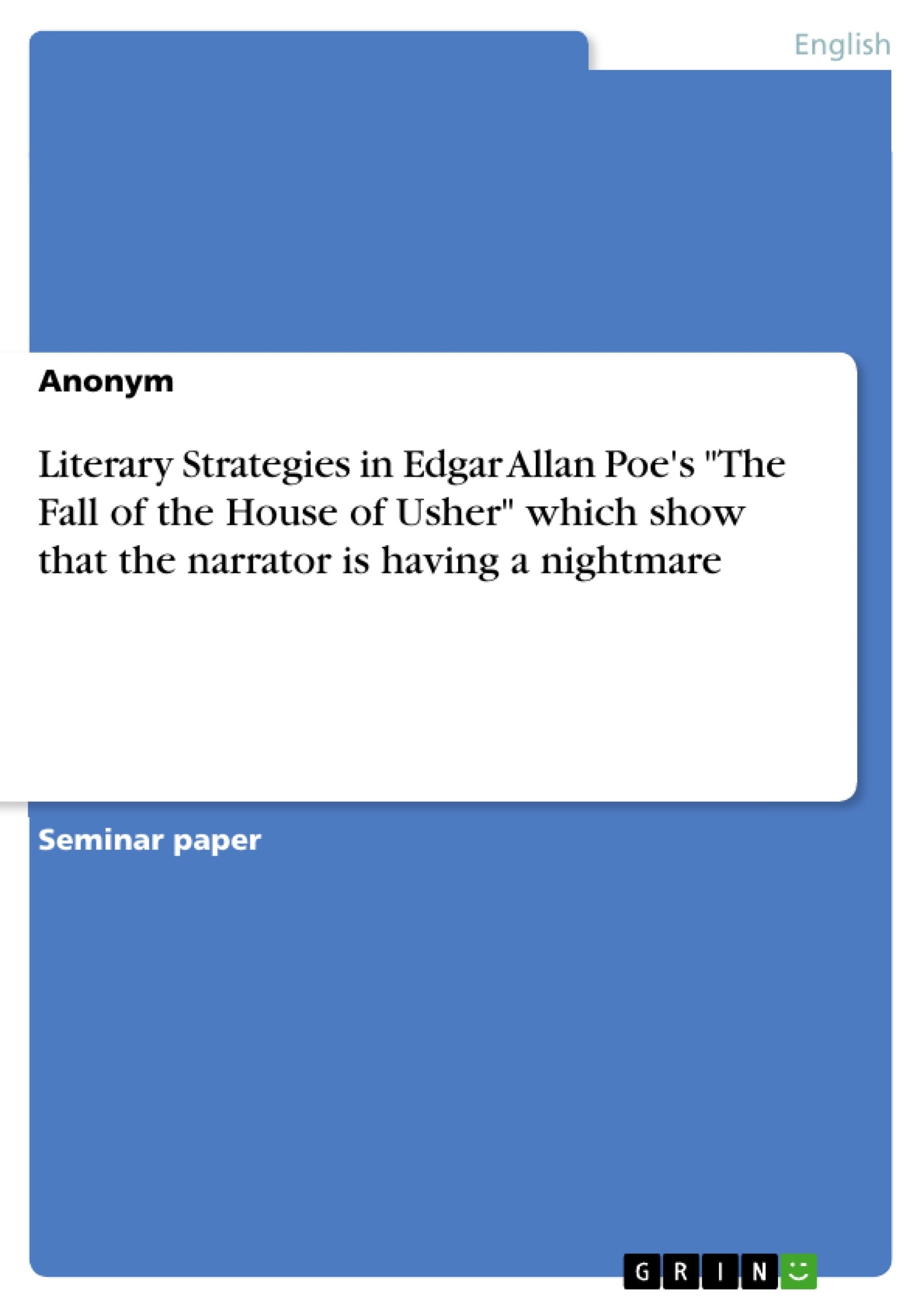In the following paper it will be analyzed which hints and possible evidences are in the text "The Fall of the House of Usher" that prove or indicate that the protagonist is in fact in the middle of a vivid dream or moreover in a nightmare.
For that purpose it will be helpful to look at how people dream at the first place and examine which elements a dream typically contains out of a psychological and medical point of view. With this approach it will be easy to compare the findings afterward to the experiences of the first-person narrator. By doing so it should be possible to see if the protagonist of the text is wide awake when he visits his friend Usher or if the last verses of Poe's “A Dream within a Dream” which say: "Is all that we see or seem / But a dream within a dream?" are suitable for the short story "The Fall of the House of Usher", too.
Table of Contents
- Introduction
- Literary Strategies Which Show that the Protagonist's Experiences Are a Dream
- The Description of Place and Time
- The Protagonist and His Behavior
- Bizarreness and Grotesque Elements
- Conclusion
Objectives and Key Themes
This paper analyzes Edgar Allan Poe's short story "The Fall of the House of Usher" and argues that the protagonist's experience can be interpreted as a dream. It examines literary strategies within the text that suggest the narrator is having a nightmare. The paper draws on psychological and medical perspectives on dreams to compare the protagonist's experiences to the typical elements found in dreams.
- Literary strategies employed in "The Fall of the House of Usher" that suggest a dream narrative
- The connection between dreams and the unconscious and uncanny
- The use of setting and atmosphere to create a dream-like environment
- The role of the protagonist's perception and behavior in suggesting a dream state
- The presence of bizarre and grotesque elements as characteristic of nightmares
Chapter Summaries
The introduction discusses Poe's fascination with the unconscious and uncanny and his use of dreams and nightmares in his writing. It highlights Poe's identification of imagination with dreams and his detailed exploration of dream states. The paper then focuses on "The Fall of the House of Usher" as a possible dream narrative, emphasizing the protagonist's lack of awareness about his dream state and the presence of dream-like elements in his journey.
The second chapter delves into literary strategies that suggest a dream narrative. It defines the characteristics of dreams and nightmares from a psychological and medical perspective, establishing a framework for analyzing the protagonist's experiences. The chapter then explores the descriptions of place and time, focusing on the dream-like atmosphere created by the setting of the Usher mansion. It examines how the isolated and decaying mansion contributes to the overall dream-like quality of the story.
Keywords
Edgar Allan Poe, "The Fall of the House of Usher," dreams, nightmares, literary strategies, unconscious, uncanny, dream narrative, setting, atmosphere, psychological perspective, dream analysis, medical perspective, grotesque, bizarre.
- Quote paper
- Anonym (Author), 2015, Literary Strategies in Edgar Allan Poe's "The Fall of the House of Usher" which show that the narrator is having a nightmare, Munich, GRIN Verlag, https://www.hausarbeiten.de/document/1392037


